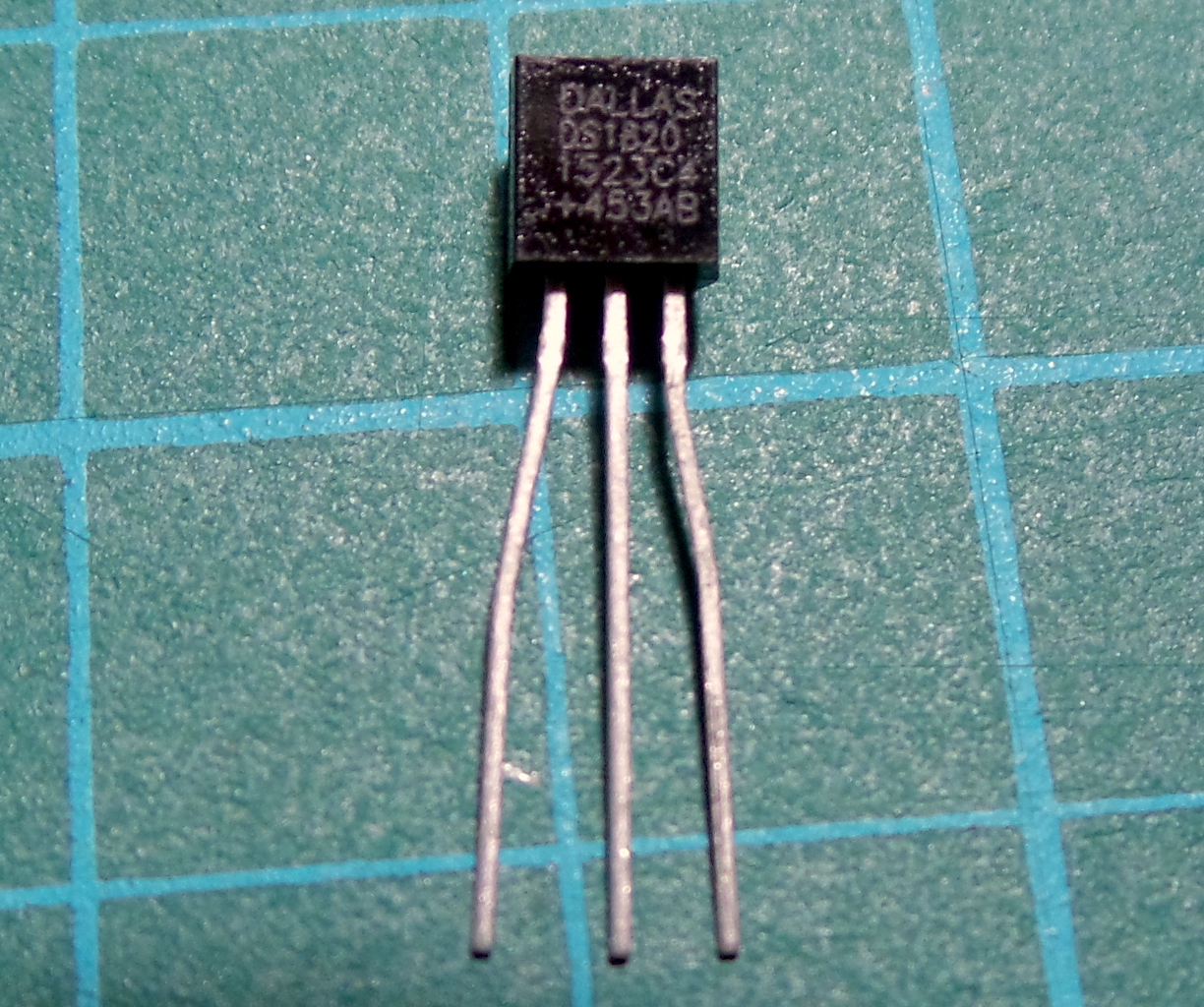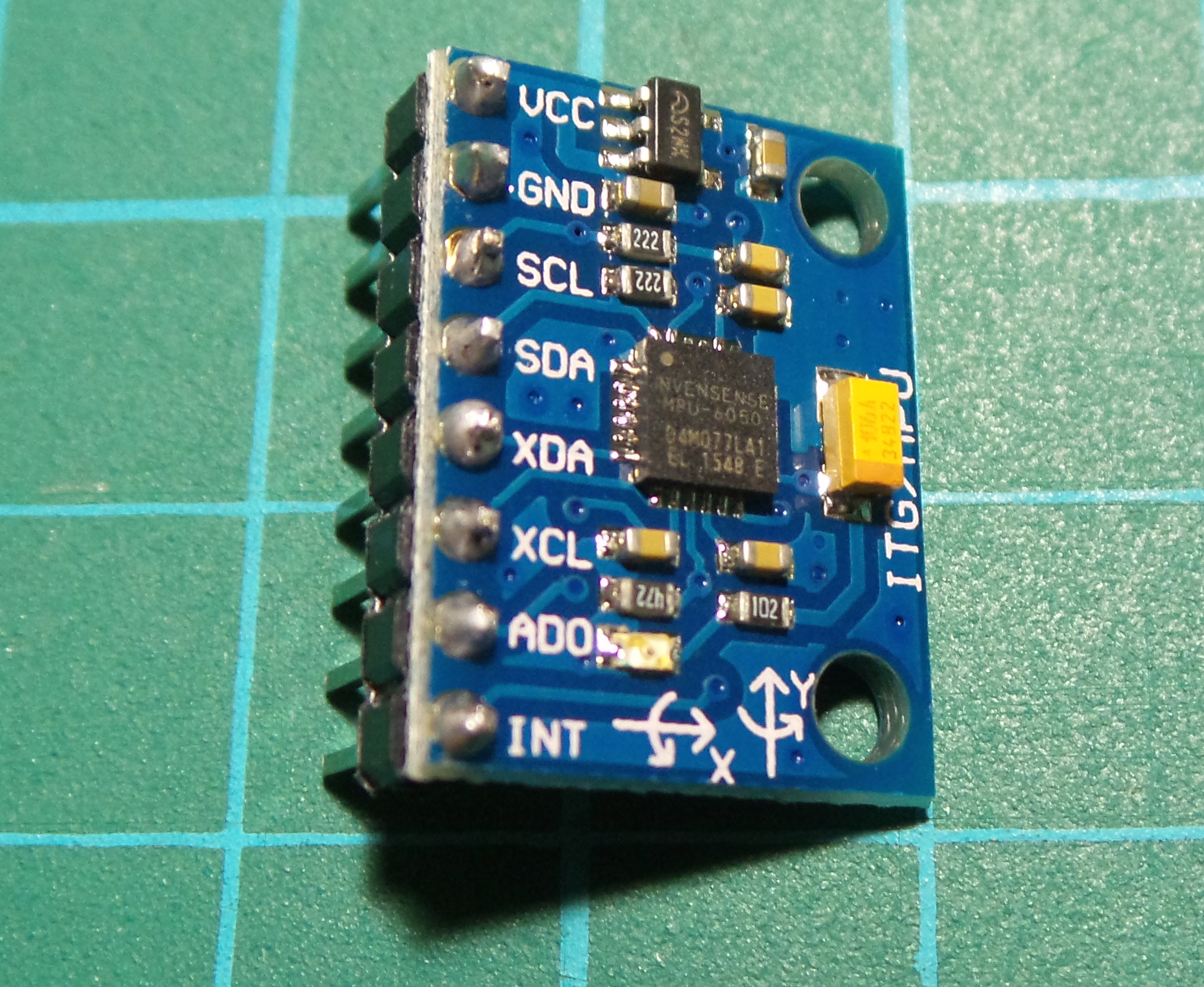LEAP#219 DS18S20 1-Wire Reading
Another way to measure temperatures, this time the DS18S20 - an inexpensive 1-Wire digital thermometer with a range of
-55°C to +125°C, at ±0.5°C accuracy from -10°C to +85°C.
It comes in TO-92 packaging and may be powered directly (using three pins), or take parasitic power from the data line
(using two pins). This makes it ideal for pin-starved microcontrollers that need a decent ambient temperature reading.
In this project, I'm just exercising the sensor with a simple Arduino sketch.
As always, all notes,
schematics and code are in the Little Electronics & Arduino Projects repo on GitHub.
read more and comment..
LEAP#218 MPU-6050 3-Axes Accelerometer Gyroscope Module
I'm planning to build a controller that needs motion detection, so got hold of an Invensense MPU-6050 3-Axes
Accelerometer Gyroscope Module to see if it would do the trick. The module conveniently operates on 3-5V. All I've done
so far is a simple sketch to confirm I can read raw values from the MPU-6050 using the Arduino Wire library.
As always, all
notes, schematics and code are in the Little Electronics & Arduino Projects repo on GitHub.
read more and comment..
LEAP#217 Basic AVR-controlled Buck Converter
Buck converters are switching power supplies configured such that the output voltage is lower than the input
voltage.
Since the primary components (inductor and capacitor) ideally consume no power, high conversion efficiencies are
possible. In practice of course, components are not ideal and there is some power loss. More significant however is any
power consumed in the control and feedback circuits.
This circuit is a demonstration and exploration of the basic buck configuration with a fixed load. Since the load is
fixed, I have not implemented any feedback control system. Of course there are plenty of buck converter chips and
modules on the market and these are so cheap you'd be crazy (or have such precise and unusual requirements) to build
your own for a real application. But it's nice to see how they work!
My inspiration for this circuit was DIY Buck Converter by
GreatScott! - IMHO the "missing lab" to accompany very good but dry courses such as the Power Electronics Specialisation from University of Colorado
Boulder.
As always,
all notes, schematics and code are in the Little Electronics & Arduino Projects repo on GitHub.
read more and comment..
LEAP#216 OSHChip driving SPI LED module
How easy is SPI with the OSHChip? I thought I'd find out by first controlling a module that has a very basic SPI-ish
slave interface.
I'm using the LEDx16Module that I designed in the KiCad like a Pro course from Tech Explorations. It has dual 74HC595
shift registers that can be driven with SPI to control 16 onboard LEDs.
As always, all notes,
schematics and code are in the Little Electronics & Arduino Projects repo on GitHub.
read more and comment..




